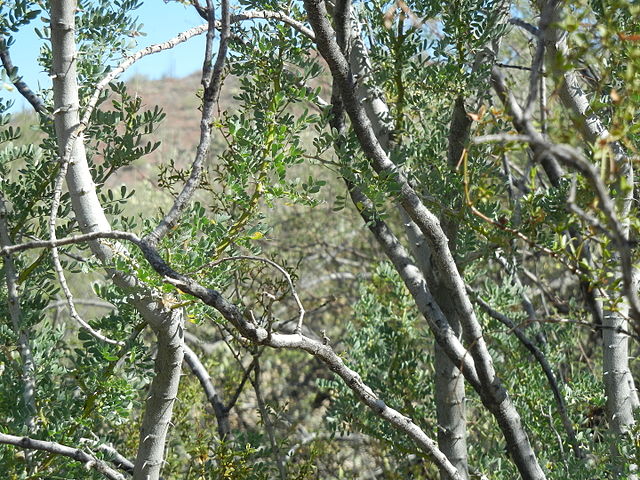 Ironwood, Saguaro National Park (Tucson Mountain District), Arizona
Ironwood, Saguaro National Park (Tucson Mountain District), Arizona
Positive interactions under nurse-plants: spatial scale, stress gradients and benefactor size
Abstract
Positive interactions often play an important role in structuring plant communities and increasing biological diversity. Using three scales of resolution, we examine the importance of a long-lived desert tree, ironwood (Olneya tesota), in structuring plant communities and promoting biological diversity in the Sonoran Desert. We examined the positive effects of Olneya canopies of different sizes on plant communities in mesic and xeric habitats throughout the central Gulf Coast subregion of Sonora, Mexico. In xeric sites, Olneya canopies had strong positive effects on plant richness and abundance, and small positive effects on the size of plants, underscoring the role of facilitation in extreme environments. In mesic sites, Olneya canopies had very little effect on perennials and a negative effect on ephemeral richness, suggesting predominantly competitive effects in this less stressful environment. Overall, Olneya canopies increased biological diversity where abiotic stress was high, but did not increase diversity in more mesic areas. Thus Olneya canopies caused consistent shifts in plant-community structure among xeric and mesic sites, but not when these landscapes were combined. Benefactor size also mediated positive interactions, with larger Olneya canopies supporting larger perennials in both xeric and mesic sites. Thus stress gradients and benefactor size both influenced the balance of facilitative and competitive effects under nurse-plant canopies, and the spatial scale at which facilitative effects shape community structure.